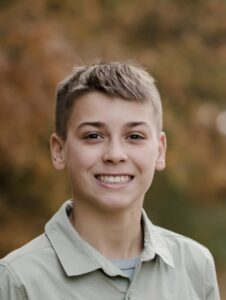by Dennis Dalman
Fourteen-year-old Ben Marushin and his Sartell family returned recently to Sartell after Ben participated in the Juvenile Diabetes Research Foundation Children’s Congress.
Ben, who has Type 1 diabetes, is one of three young people from Minnesota and among the 160 children ages 4-17 selected nationally to take part in the JDRF’s Children’s Congress. There were also children delegates there from some other countries.
Ben’s brother, Peter, 9, also has Type 1 diabetes. Their other siblings are Elena, 16; and Zoe, 11. All traveled to the Children’s Congress event, along with their parents, Patrick and Robin.
As participants in JDRF Children’s Congress, delegates had a chance to help members of Congress understand what life with T1D (Type 1 Diabetes) is like while forming lasting bonds with fellow youth who live with that type of autoimmune disease.
T1D is known as an “autoimmune” disease because it is caused when the body’s immune system accidentally attacks and destroys good cells – in this case the beta cells in the pancreas that make insulin. Insulin courses through the blood stream and is the “key” that “unlocks” cells so that glucose (sugar) can enter those cells for proper functioning. If there is no insulin, glucose will build up in the bloodstream, causing a number of serious problems.
T2D (Type 2 Diabetes) happens, usually in adults or elderly people, when their bodies do not make enough insulin or the cells resist insulin, causing imbalances in glucose in the body.
Ben was only 10 months old when he was diagnosed with T1D, and brother Peter was only 6 months old when it became apparent that he, too, had T1D. Fortunately, both boys are doing just fine, thanks to medical-equipment advances that include an Ominpod insulin pump and a Dexcom continuous monitor. Both of those tubeless small devices are worn attached to the skin. One measures the amount of glucose in the blood, and the other automatically injects insulin into the bloodstream when needed, via a tiny short needle from the device into fatty tissue. Thanks to those devices, Peter and Ben and many other people, young and older, do not have to jab fingers for blood to measure glucose readings or inject insulin via a syringe-and-needle into their bodies.
Thanks partly to the skin-patch devices, Ben and Peter are not hindered in their happy daily lives. They love to play soccer, hockey and often golf together. For Ben, an honors student, his favorite achievement so far is winning first place in hockey. He also loves to snowboard in winter. Ben hopes to be a computer engineer someday, like his uncle.
The Marushin family knows all too well about diabetes. Patrick’s sister was diagnosed with the disease when she was 6 years old. She is now 44 and works for the Medtronics company. Robin’s father also suffered from diabetes and later had to have some limb amputations and then succumbed to kidney failure at the age of 71, two years ago. His grandfather’s struggles with diabetes made Ben determined to help fight for remedies or maybe a total cure for the disease someday.
“I don’t want anyone to have to deal with that,” said Ben, referring to his grandfather.
That is why, when he was in Washington, D.C., he and his family advocated with legislative members for the urgent needs for better treatments and easier access to therapies and technologies.
Patrick Marushin has degrees in physics and engineering. He has been a high-school science teacher, a stay-at-home dad for his four children, a substitute teacher at middle school and high school, an engineer for the 3M company and a Sartell-St. Stephen School Board member for four years.
Robin Marushin is an obstetrician and gynecologist at St. Cloud Hospital.
They, like their children, are happy they went to the JDRF Children’s Congress.

Ben Marushin




